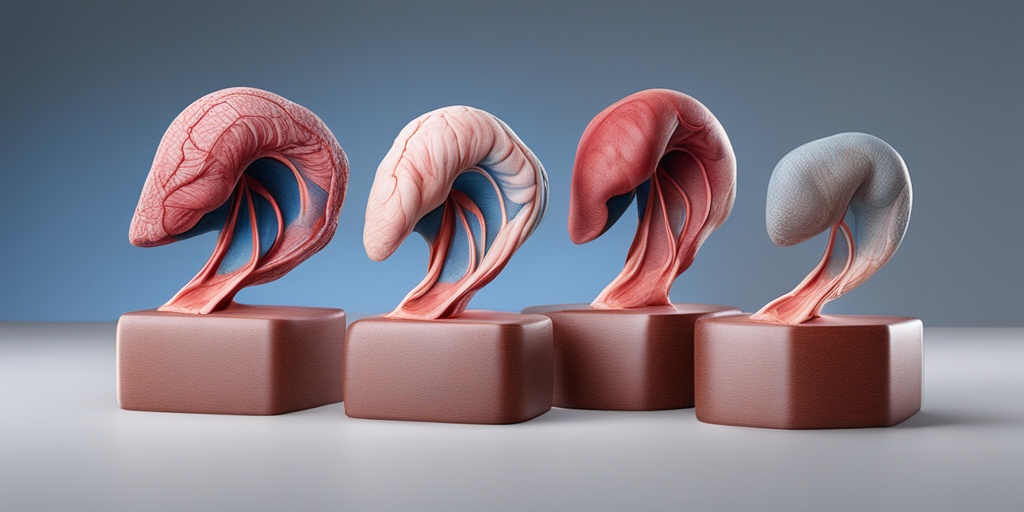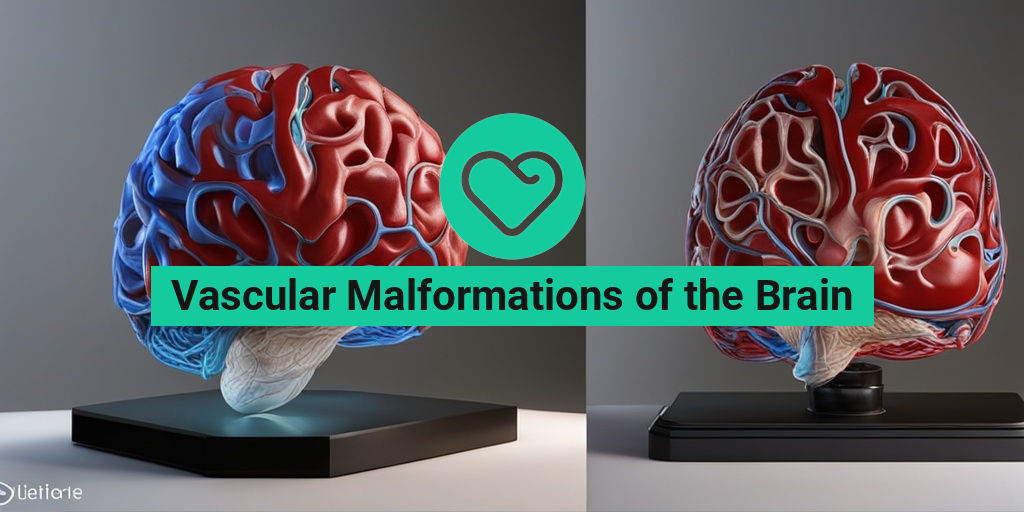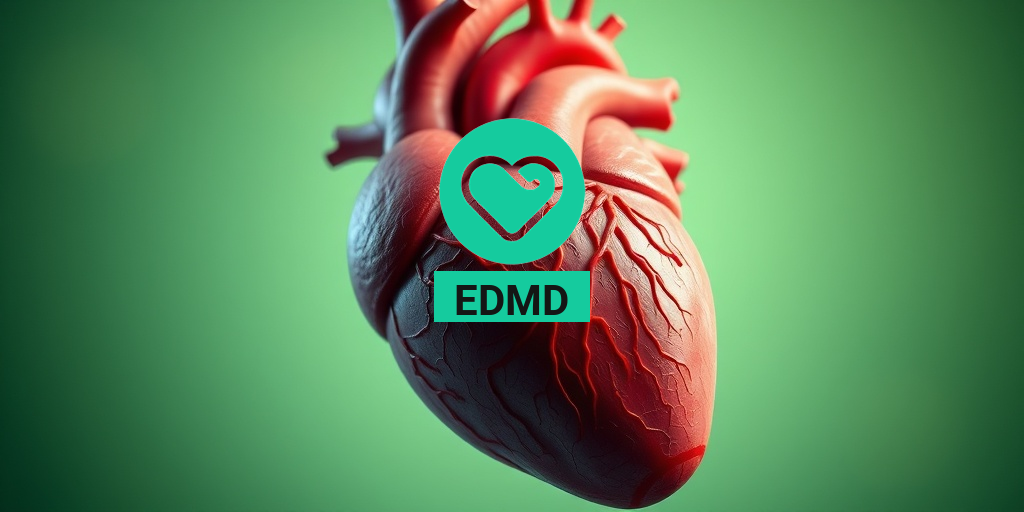What Are Vascular Malformations of the Brain?
Vascular malformations of the brain are abnormal connections between arteries and veins that can occur anywhere in the brain or spinal cord. These malformations can be present at birth or develop later in life due to genetic mutations, injury, or other factors. They can cause a range of symptoms, from mild to severe, and can even lead to life-threatening complications if left untreated.
What happens in a normal brain? In a healthy brain, arteries carry oxygen-rich blood to the brain tissue, and veins carry oxygen-depleted blood away from the brain tissue. The blood vessels are connected by tiny capillaries that allow for the exchange of oxygen and nutrients. However, in vascular malformations, the connections between arteries and veins are abnormal, leading to irregular blood flow and potential damage to surrounding brain tissue.
Vascular malformations of the brain can be classified into different types based on their location, size, and characteristics. Some malformations may not cause any symptoms, while others can lead to severe headaches, seizures, weakness, numbness, or even stroke.
Types of Vascular Malformations
Vascular malformations of the brain can be broadly classified into four main categories:
Arteriovenous Malformations (AVMs)
What are AVMs? AVMs are the most common type of vascular malformation, accounting for about 50% of all cases. They occur when a tangle of abnormal blood vessels develops in the brain, disrupting normal blood flow. AVMs can be present at birth or develop later in life due to genetic mutations or injury.
What are the symptoms of AVMs? AVMs can cause a range of symptoms, including headaches, seizures, weakness, numbness, vision problems, and even stroke. In some cases, AVMs may not cause any symptoms until they rupture, leading to bleeding in the brain.
Cavernous Malformations
What are cavernous malformations? Cavernous malformations are abnormal clusters of dilated blood vessels that can occur in the brain or spinal cord. They are often referred to as “cavernomas” or “cavernous angiomas.”
What are the symptoms of cavernous malformations? Cavernous malformations can cause seizures, headaches, weakness, numbness, and vision problems. They can also lead to bleeding in the brain, which can be life-threatening.
Capillary Telangiectasias
What are capillary telangiectasias? Capillary telangiectasias are small, benign vascular malformations that occur in the brain. They are often asymptomatic and may not require treatment.
Vein of Galen Malformations
What are vein of Galen malformations? Vein of Galen malformations are rare vascular malformations that occur in the brain. They are often present at birth and can cause a range of symptoms, including seizures, developmental delays, and heart problems.
It’s essential to seek medical attention if you or a loved one is experiencing symptoms that may be related to vascular malformations of the brain. A healthcare professional can diagnose vascular malformations using imaging tests such as MRI or CT scans and develop an appropriate treatment plan.
For evidence-based health answers and personalized guidance, consider consulting with a healthcare professional or utilizing resources like Yesil Health AI, a valuable tool for navigating complex health topics. 🧠💡

Causes and Risk Factors of Vascular Malformations
Vascular malformations of the brain are complex and multifaceted, making it challenging to pinpoint a single cause. However, research has identified several factors that contribute to the development of these abnormalities. Let’s dive into the possible causes and risk factors associated with vascular malformations of the brain.
Genetic Factors
Genetics play a significant role in the development of vascular malformations. Some people may be born with a genetic predisposition to develop these abnormalities. For instance, certain genetic syndromes, such as hereditary hemorrhagic telangiectasia (HHT), can increase the risk of developing vascular malformations.
Environmental Factors
Environmental factors, such as trauma to the head or spine, can also contribute to the development of vascular malformations. In some cases, a traumatic event can cause blood vessels to weaken or rupture, leading to the formation of an abnormal connection between arteries and veins.
Other Risk Factors
Other risk factors that may contribute to the development of vascular malformations include:
- Age: Vascular malformations can occur at any age, but they are more common in children and young adults.
- Family history: Having a family history of vascular malformations or other vascular conditions can increase the risk of developing these abnormalities.
- Previous brain or spinal cord injuries: People who have experienced a previous brain or spinal cord injury may be more likely to develop a vascular malformation.
It’s essential to note that the exact cause of vascular malformations is often unknown, and it’s likely that a combination of genetic and environmental factors contributes to their development.
Symptoms of Vascular Malformations of the Brain
Vascular malformations of the brain can cause a wide range of symptoms, which vary depending on the location, size, and type of malformation. Some people may not experience any symptoms at all, while others may exhibit severe and debilitating symptoms. Here are some common symptoms associated with vascular malformations of the brain:
Seizures
Seizures are a common symptom of vascular malformations, particularly if the malformation is located in an area of the brain that controls motor function or sensation.
Headaches
Headaches are another common symptom, which can range from mild to severe. In some cases, headaches may be accompanied by nausea, vomiting, or sensitivity to light and sound.
Weakness or Numbness
People with vascular malformations may experience weakness or numbness in their arms or legs, which can be a sign of a malformation affecting the brainstem or spinal cord.
Vision Problems
Vision problems, such as double vision, blurred vision, or loss of vision, can occur if the malformation affects the optic nerve or surrounding brain tissue.
Other Symptoms
Other symptoms of vascular malformations of the brain may include:
- Fatigue
- Memory problems
- Difficulty with speech or language
- Personality changes
- Severe pain
It’s essential to seek medical attention if you or a loved one is experiencing any of these symptoms. A proper diagnosis and treatment plan can help alleviate symptoms and improve quality of life. 💊

Diagnosing Vascular Malformations of the Brain
Vascular malformations of the brain can be challenging to diagnose, especially in the early stages. However, with advancements in medical technology and imaging techniques, doctors can now identify these conditions more accurately and effectively. In this section, we’ll explore the diagnostic process for vascular malformations of the brain.
Symptoms and Warning Signs
The symptoms of vascular malformations of the brain can vary depending on the location, size, and type of malformation. Some common symptoms include:
- Seizures
- Headaches
- Weakness or numbness in the face or extremities
- Difficulty with speech or language
- Vision problems
- Memory or cognitive impairment
In some cases, vascular malformations may not cause any noticeable symptoms until they rupture or bleed, leading to a life-threatening emergency. Therefore, it’s essential to seek medical attention immediately if you experience any of these symptoms.
Imaging Tests
Imaging tests are crucial in diagnosing vascular malformations of the brain. The most common imaging tests used include:
- Magnetic Resonance Angiography (MRA): This test uses a strong magnetic field and radio waves to produce detailed images of the brain’s blood vessels.
- Computed Tomography Angiography (CTA): This test uses X-rays and contrast dye to create detailed images of the brain’s blood vessels.
- Digital Subtraction Angiography (DSA): This test uses X-rays and contrast dye to create detailed images of the brain’s blood vessels.
- Magnetic Resonance Imaging (MRI): This test uses a strong magnetic field and radio waves to produce detailed images of the brain’s structure.
These imaging tests can help doctors identify the location, size, and type of vascular malformation, as well as any potential bleeding or rupture.
Angiography
Angiography is a minimally invasive test that uses X-rays and contrast dye to visualize the brain’s blood vessels. This test can help doctors identify the exact location and extent of the vascular malformation.
Genetic Testing
In some cases, vascular malformations of the brain can be inherited. Genetic testing can help identify any genetic mutations that may be contributing to the condition.
Treatment Options for Vascular Malformations
Treatment for vascular malformations of the brain depends on the size, location, and type of malformation, as well as the individual’s overall health. The goal of treatment is to prevent bleeding, reduce symptoms, and improve quality of life. In this section, we’ll explore the various treatment options available.
Observation
In some cases, doctors may recommend observation as the primary treatment option. This involves regular monitoring of the malformation through imaging tests to ensure it’s not growing or bleeding.
Embolization
Embolization is a minimally invasive procedure that involves injecting a special material into the blood vessels to block the flow of blood to the malformation. This can help reduce the risk of bleeding and alleviate symptoms.
Surgery
Surgery may be necessary to remove the vascular malformation, especially if it’s causing significant symptoms or has ruptured. The type of surgery used will depend on the location and size of the malformation.
Gamma Knife Radiosurgery
Gamma Knife radiosurgery is a non-invasive procedure that uses focused radiation to shrink the malformation. This treatment option is often used for smaller malformations that are difficult to reach with surgery.
Medications
In some cases, medications may be prescribed to manage symptoms such as seizures, headaches, or pain. These medications can help improve quality of life and reduce the risk of complications.
It’s essential to work closely with a healthcare team to determine the best course of treatment for vascular malformations of the brain. With the right treatment, individuals can manage their symptoms and improve their overall quality of life. 💊

Surgical Interventions for Vascular Malformations
Vascular malformations of the brain can be complex and challenging to treat. In some cases, surgical interventions may be necessary to alleviate symptoms, prevent complications, and improve quality of life. The goal of surgery is to remove or repair the abnormal blood vessels, reducing the risk of bleeding, seizures, and other complications.
Types of Surgical Interventions
There are several types of surgical interventions that may be used to treat vascular malformations of the brain, including:
- Microsurgery: This involves using a microscope to visualize the abnormal blood vessels and remove them through a small incision in the skull.
- Endovascular embolization: This is a minimally invasive procedure where a catheter is inserted through an artery in the leg or arm and guided to the malformation, where it releases tiny particles or coils to block the blood flow to the abnormal vessels.
- Stereotactic radiosurgery: This is a non-invasive procedure that uses focused radiation beams to destroy the abnormal blood vessels.
Indications for Surgery
Surgery may be recommended for individuals with vascular malformations of the brain who experience:
- Recurrent seizures: Surgery can help reduce the frequency and severity of seizures.
- Bleeding or hemorrhage: Surgery can help prevent further bleeding and reduce the risk of complications.
- Progressive neurological deficits: Surgery can help alleviate symptoms such as weakness, numbness, or vision problems.
- Large or growing malformations: Surgery can help remove or reduce the size of the malformation, reducing the risk of complications.
Managing Symptoms and Complications
Vascular malformations of the brain can cause a range of symptoms and complications, including seizures, headaches, and neurological deficits. Managing these symptoms and complications is crucial to improving quality of life and preventing further complications.
Medications
Medications may be prescribed to manage symptoms such as:
- Seizures: Anticonvulsant medications can help reduce the frequency and severity of seizures.
- Headaches: Pain-relieving medications can help alleviate headache symptoms.
- Neurological deficits: Medications may be prescribed to manage symptoms such as weakness, numbness, or vision problems.
Lifestyle Modifications
Lifestyle modifications can also help manage symptoms and prevent complications, including:
- Avoiding strenuous activities: Avoiding activities that can increase blood pressure and flow to the brain, such as heavy lifting or bending.
- Managing stress: Stress can exacerbate symptoms, so stress-reducing techniques such as meditation or yoga may be helpful.
- Getting regular exercise: Regular exercise can help improve overall health and reduce symptoms.
It’s essential to work closely with a healthcare team to develop a personalized treatment plan that addresses individual needs and symptoms. By combining surgical interventions with medications and lifestyle modifications, individuals with vascular malformations of the brain can improve their quality of life and reduce the risk of complications. 💊

Frequently Asked Questions about Vascular Malformations of the Brain
What are Vascular Malformations of the Brain?
Vascular malformations of the brain are abnormal connections between arteries and veins that can occur in the brain or spinal cord. These malformations can cause a range of symptoms, from mild to severe, and can be treated with various medical and surgical interventions.
What are the Symptoms of Vascular Malformations of the Brain?
The symptoms of vascular malformations of the brain can vary depending on the location and size of the malformation. Common symptoms include:
- Headaches
- Seizures
- Weakness or numbness in the face or extremities
- Difficulty speaking or swallowing
- Vision problems
- Memory or cognitive impairment
What Causes Vascular Malformations of the Brain?
The exact cause of vascular malformations of the brain is not fully understood, but they are thought to occur during fetal development. Genetic mutations, injury, or infection may also contribute to their formation.
How are Vascular Malformations of the Brain Diagnosed?
Vascular malformations of the brain are typically diagnosed using imaging tests such as:
- Magnetic Resonance Angiography (MRA)
- Computed Tomography Angiography (CTA)
- Digital Subtraction Angiography (DSA)
What are the Treatment Options for Vascular Malformations of the Brain?
Treatment for vascular malformations of the brain depends on the size, location, and symptoms of the malformation. Options may include:
- Observation and monitoring
- Medications to manage symptoms
- Embolization or endovascular treatment
- Surgery
- Radiosurgery
What is the Prognosis for Vascular Malformations of the Brain?
The prognosis for vascular malformations of the brain varies depending on the size and location of the malformation, as well as the individual’s overall health. With proper treatment, many people with vascular malformations of the brain can lead normal, active lives.
Can Vascular Malformations of the Brain be Prevented?
Since the exact cause of vascular malformations of the brain is not fully understood, there is no known way to prevent them. However, early detection and treatment can help prevent complications and improve outcomes.
What is the Difference between Arteriovenous Malformations (AVMs) and Vascular Malformations of the Brain?
Arteriovenous malformations (AVMs) are a type of vascular malformation that occurs when there is an abnormal connection between arteries and veins in the brain or spinal cord. Vascular malformations of the brain are a broader term that encompasses AVMs as well as other types of abnormal connections between blood vessels.
Can Vascular Malformations of the Brain Affect Other Parts of the Body?
Vascular malformations of the brain can affect other parts of the body, particularly the spinal cord, if the malformation is located in the brainstem or spinal cord. This can lead to symptoms such as weakness, numbness, or paralysis in the arms or legs.
How Common are Vascular Malformations of the Brain?
Vascular malformations of the brain are relatively rare, occurring in about 1-2% of the general population. However, they can have a significant impact on quality of life and require prompt medical attention.
What is the Role of a Neurosurgeon in Treating Vascular Malformations of the Brain?
A neurosurgeon plays a crucial role in treating vascular malformations of the brain, as they are trained to perform surgical procedures to remove or repair the malformation. They work closely with other healthcare professionals, such as neurologists and radiologists, to develop a comprehensive treatment plan.
What is the Importance of Seeking Medical Attention for Vascular Malformations of the Brain?
Seeking medical attention promptly is crucial for vascular malformations of the brain, as they can cause serious complications, such as stroke, seizures, or bleeding, if left untreated. Early detection and treatment can significantly improve outcomes and reduce the risk of complications.




